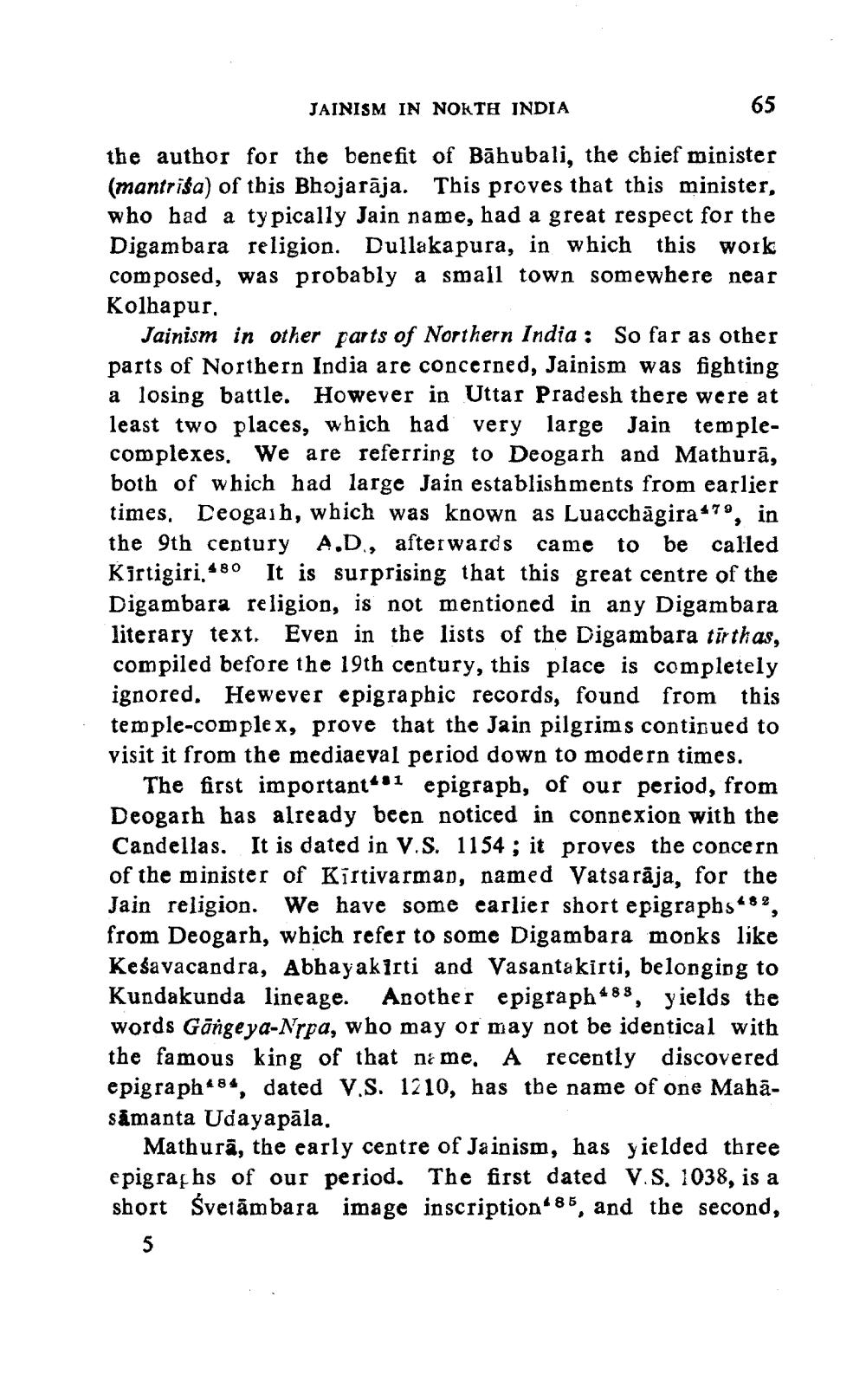________________
JAINISM IN NOKTH INDIA
65
the author for the benefit of Bāhubali, the chief minister (mantriša) of this Bhojarāja. This proves that this minister, who had a typically Jain name, had a great respect for the Digambara religion. Dullakapura, in which this work composed, was probably a small town somewhere near Kolhapur,
Jainism in other parts of Northern India : So far as other parts of Northern India are concerned, Jainism was fighting a losing battle. However in Uttar Pradesh there were at least two places, which had very large Jain templecomplexes. We are referring to Deogarh and Mathurā, both of which had large Jain establishments from earlier times, Deogaih, which was known as Luacchāgira*7', in the 9th century A.D., afterwards came to be called Kirtigiri,"80 It is surprising that this great centre of the Digambara religion, is not mentioned in any Digambara literary text. Even in the lists of the Digambara tirthas, compiled before the 19th century, this place is completely ignored. Hewever epigraphic records, found from this temple-complex, prove that the Jain pilgrims continued to visit it from the mediaeval period down to modern times.
The first important*11 epigraph, of our period, from Deogarh has already been noticed in connexion with the Candellas. It is dated in V.S. 1154 ; it proves the concern of the minister of Kirtivarman, named Vatsa rāja, for the Jain religion. We have some earlier short epigraphs*82, from Deogarh, which refer to some Digambara monks like Kešavacandra, Abhayakirti and Vasantakirti, belonging to Kundakunda lineage. Another epigraph 488, yields the words Gāngeya-Nrpa, who may or may not be identical with the famous king of that name. A recently discovered epigraph*8*, dated V.S. 1210, has the name of one Mahasåmanta Udayapāla.
Mathurā, the early centre of Jainism, has yielded three epigrachs of our period. The first dated V.S. 1038, is a short svetām bara image inscription"85, and the second,




